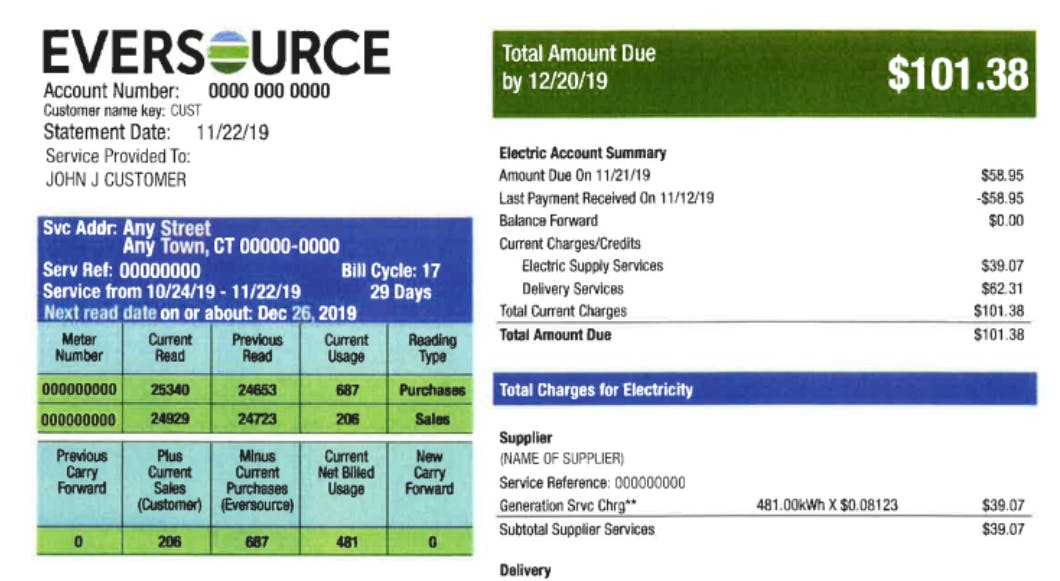Whether it’s been days or years since your solar panels were installed, this article outlines how solar panels impact your electric bill, how utilities charge for and credit electricity, and how your utility’s rate structures influence your monthly savings.
What does a typical electricity bill include?
Let’s look at an example electricity bill and break down the basic components that most customers will see on their bill.
Billing period
Most utilities bill on a monthly basis. In rare cases, utilities may send bills every other month. Note: The date range often does not align with the start and end of the month.
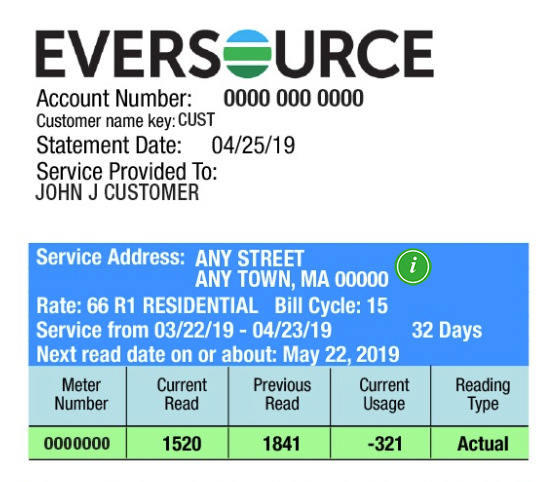
Source: Eversource
Fixed monthly charge
Sometimes referred to as a Customer, Base, or TDU Charge, this recurring charge typically ranges from $10-25 per month and is the cost of being connected to the grid. You may see it expressed as a monthly or daily charge. This charge is non-bypassable, meaning you cannot offset it with credits from excess solar energy.
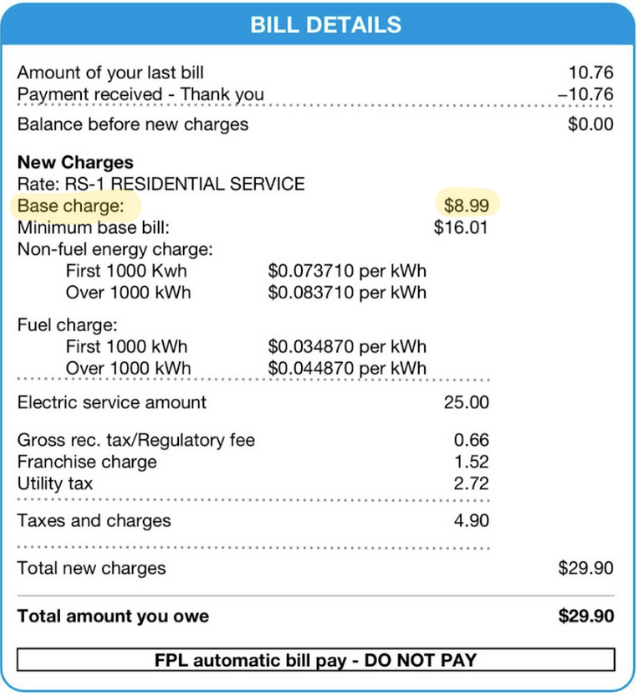
Source: Florida Power & Light
Energy charge ($/kWh)
Energy charges appear as the electricity you consume (in kilowatt-hours or kWh) charged at the rates currently set by your electricity provider. Total rates typically range from $0.09-0.40/kWh, depending on your area. This rate can change depending on your electricity plan or billing structure. We go over the four main types below!
Taxes, if applicable
Your utility bill may include taxes. These are typically imposed by your state, city, or county and can range from 0-18% of the total bill amount or certain charges. Solar may help you reduce energy taxes by reducing the energy charges on your bill.
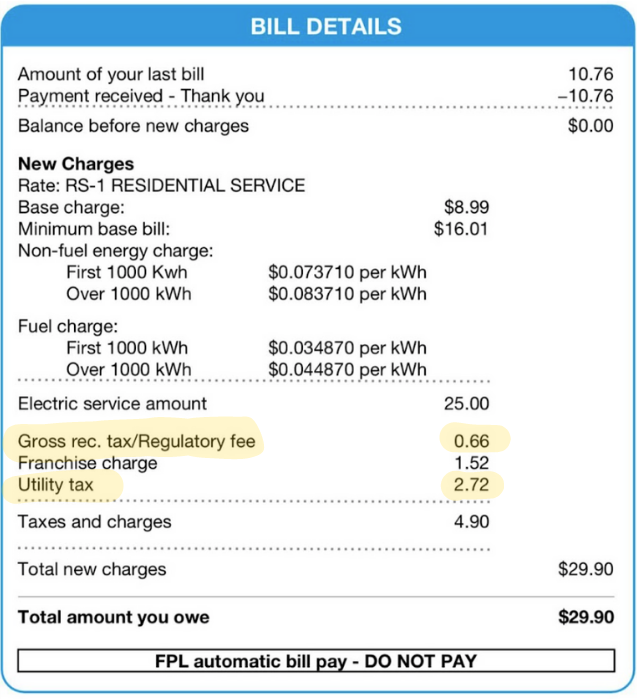
Source: Florida Power & Light
How are your energy rates ($/kWh) structured?
Depending on your area, you may be assigned a specific energy rate plan, also called a tariff, by your utility or have the freedom to choose. Here are the four main plan types and how they work. Your utility rate plan is likely a combination of one or two of these.
Flat rate plan
With a flat rate plan, you are charged the same rate per kWh of electricity regardless of how much you consume from the grid. For example, if your rate is $0.10/kWh and you use 1,000 kWh of electricity, your energy charge would be $100.
Tiered rate plan
With a tiered rate plan, your utility will assign different rates based on certain levels or “tiers” of energy usage—typically at 500 kWh, 1,000 kWh, and 2,000 kWh. For example, your utility may charge $0.08/kWh for the first 500 kWh of usage but charge $0.10/kWh for the next 500 kWh. Using those rates, if you were to consume 1,000 kWh, your charges would look like this:
- Your first 500 kWh x $0.08/kWh = $40
- The remaining 500 kWh x $0.10/kWh = $50
- Your total energy charge would be $40 + $50 = $90
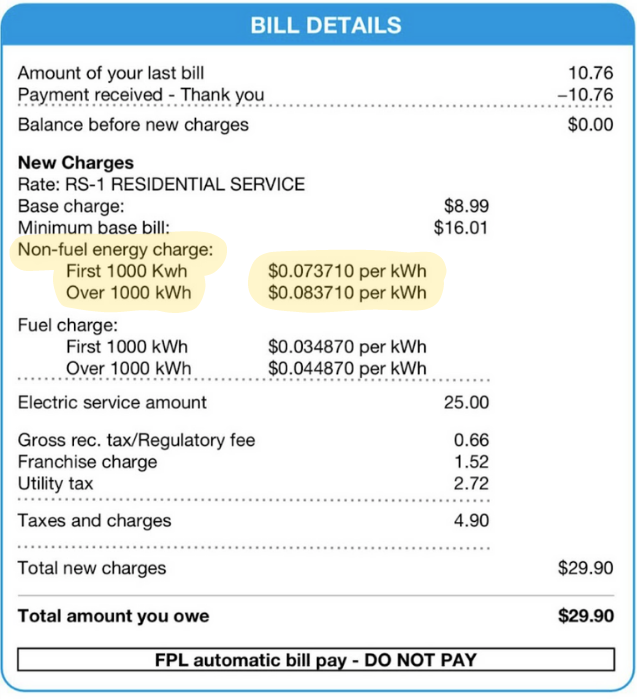
Source: Florida Power & Light
Seasonal rate plan
With a seasonal rate plan, utilities charge different rates based on the seasons. Your utility provider will define which months are considered summer, fall, winter, and spring and assign a rate based on the season.
You most likely have a tiered or time-of-use rate plan combined with charges that change seasonally.
Source: Tucson Electric Power
Time-of-use (TOU) rate plan
Time-of-use electricity rates change based on when the electricity is used in your home, including both time of day and time of year. It’s based on the supply and demand model. Rates are typically higher during periods of high demand or “peak” hours and lower during periods of low demand or “off-peak” hours. The peak and off-peak hours and rates vary by utility and are designed to encourage smarter energy usage.
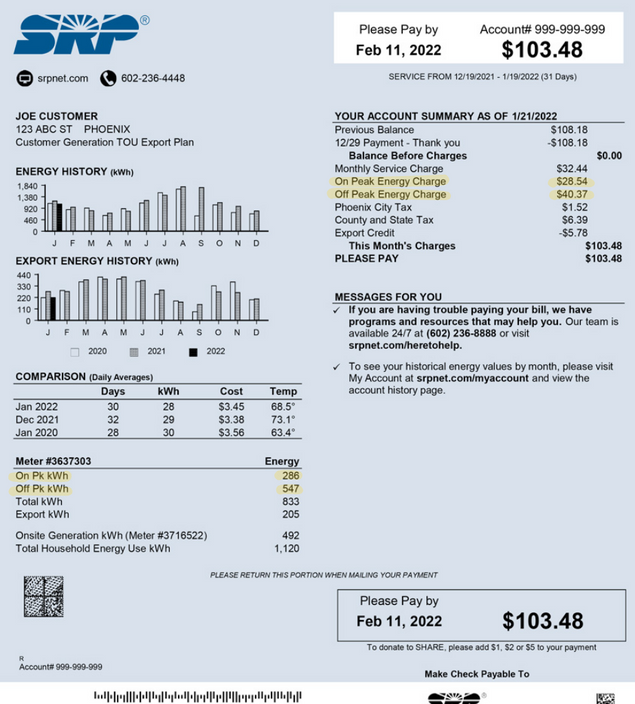
Source: Salt River Project
Demand charges
Demand charges are very rare for residential customers. Usually applied in commercial and industrial environments, these charges account for both the total amount of energy used and the rate at which it’s consumed, allowing utilities to disincentivize short spikes in energy demand during peak hours. Demand charges are expressed as $/kW consumed in 15-minute to 1-hour intervals, and are accompanied with lower $/kWh energy charges compared to energy-only plans.
Who decides my utility rates and net metering policy?
In the U.S., all utilities must abide by Federal and State rules and regulations. In 2017, 72% of Americans received electricity distribution service from Investor Owned Utilities (IOUs) per the U.S. Energy Information Administration. IOUs are owned by stockholders and are designed as a monopoly for their service area so that there is only one company installing distribution and transmission poles and wires to each home or business. IOUs are governed by Public Utility Commissions, which are a state regulatory body appointed by elected officials. IOUs work with the electric utility to set rates for consumers.
Some electric ratepayers may receive electric service from a publicly owned utility or member-owned cooperative. Publicly owned utilities are often municipal-run. Cooperative utilities are not-for-profit. Municipal and cooperative utilities are often governed by a Board or City Council, and not the state Public Utility Commission. Therefore, they will likely have different rates and net metering policies.
How do electricity bills change with solar?
As a solar homeowner, any electricity generated from your solar panels and immediately consumed (used) in your home offsets your need to purchase electricity from your utility! Any electricity that is generated by your solar panels and not immediately consumed in the home or stored within a solar battery gets shared with the electric grid and becomes part of the total electric mix. For example, your utility will send your excess solar power to a neighbor or street light.
In areas with net energy metering (NEM), each solar customer is billed by their utility provider for the “net” difference in grid electricity purchased vs. shared. Net energy metering is a general term used to describe this type of billing arrangement where solar customers can earn bill credits for the excess solar energy their panels generate and add to the grid. However, the value of the credits depends on the utility, its retail rate, and its specific net metering policy.
How is excess solar energy credited to your bill?
As a general rule, net metering programs help solar homeowners save more money on their electricity bill by crediting homeowners for any excess energy their solar panels produce. However, the availability and structure of net metering programs vary by location. Let’s break down the types.
1-to-1 net metering
With 1-to-1 net metering, both your consumption from the grid and your production shared with the grid are credited at the full retail rate—the same $/kWh energy price at which the utility charges you for electricity. Therefore, you are only billed your net kWh usage, or the difference between the two.
Typically, any excess credits can be rolled over month to month for 12 months until an annual “true-up.” At the time of true-up, any remaining credits will either be:
- Cashed out at the avoided-cost rate, or the price a utility pays to produce the same power itself or purchase from a power plant, which is lower than the retail rate the utility charges you.
- Carried forward to the next year
- Expired
True-up policies vary based on utility, area, and/or state legislation.
Source: Eversource
Monthly net metering
With monthly net metering, the amount of excess solar energy you share with the grid and the amount of energy you pull from the grid are “netted” at a 1-to-1 rate within the same monthly billing cycle. At the end of each billing cycle, your utility will calculate your net usage by subtracting the energy consumed from the energy shared, and “true up” any remaining credits at a specified rate set by your utility provider. With monthly net metering, the true-up is happening after about 30 days rather than annually with the 1-to-1 net metering policy discussed prior. True-up policies vary based on utility, area, and/or state legislation.
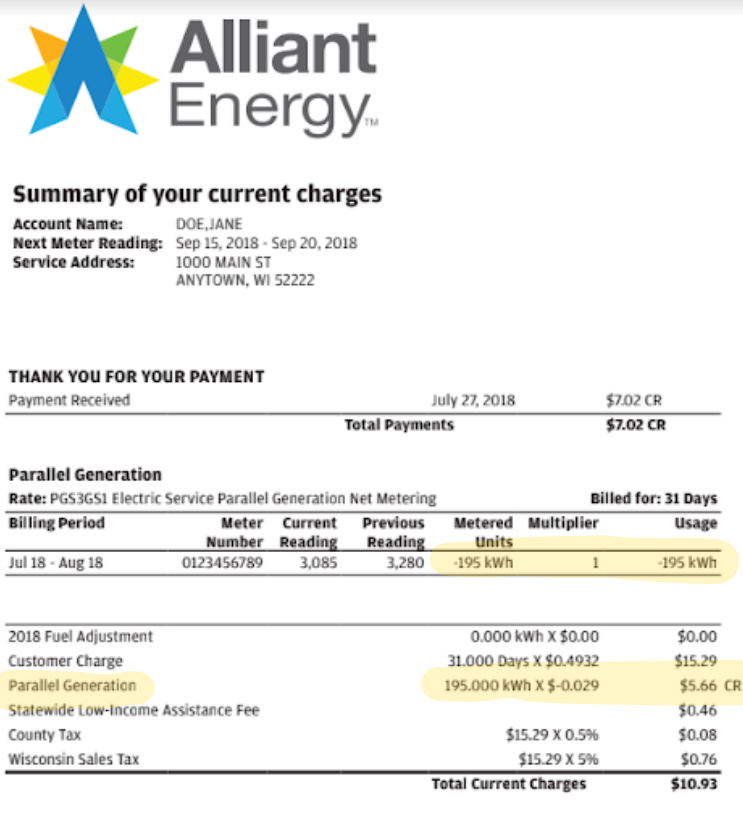
Source: Alliant Energy
Net billing (export credits)
With net billing, any excess solar energy shared with the grid is valued at a specified export rate set by your utility. Any solar energy you pull from the grid will be valued at the retail rate—the price at which your utility charges you for electricity. The value of export credits depends on your utility. California NEM 3.0 is a net billing policy for new solar customers who interconnect—or apply for approval from the utility—after April 14, 2023.
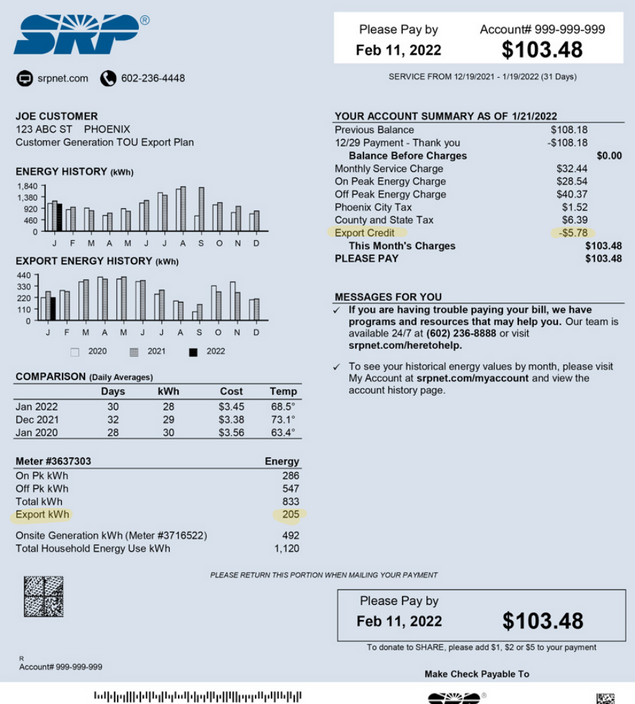
Source: Salt River Project
Buy all, Sell all
With Buy all, Sell all (also called Feed In or Value of Solar Tariff), all of your solar energy—whether consumed or shared with the grid—is valued at a specified rate. All of the energy you need to pull from the grid is valued at your utility’s set retail price. Depending on the program, customers may apply the credits toward their electric bill or receive checks! Buy all, Sell all models are extremely rare in the U.S. for residential solar system owners, but exist in the commercial and utility-scale market as well as Europe and Australia.
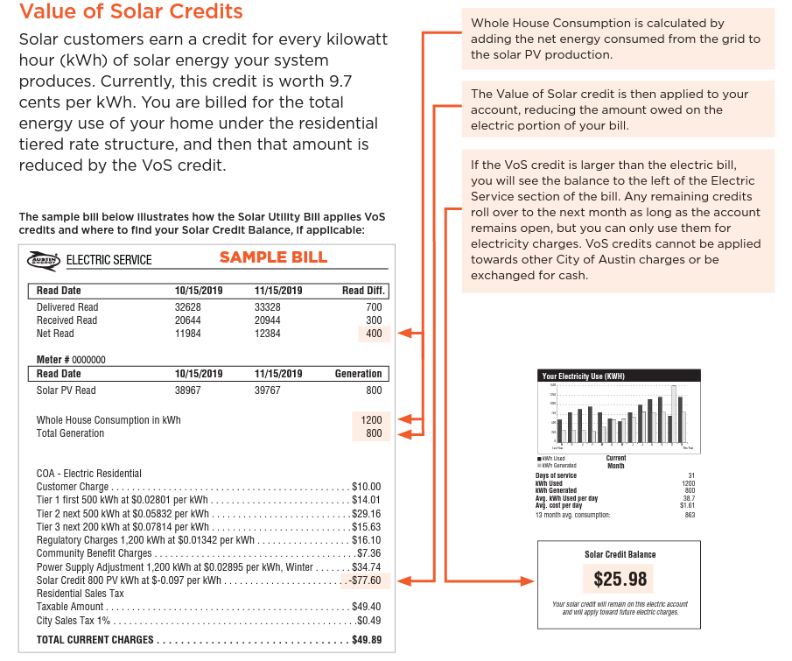
Source: Austin Energy
What if you have net metering and time-of-use rates?
For TOU customers with 1-to-1 net metering or monthly net metering policies, excess net metering credits will first net within the same time period they were exported in. Any remaining credits left over may be a monetary dollar ($) credit or stay a kilowatt-hour (kWh) credit.
- Monetary ($) - Some utilities convert these credits into a dollar value based on the on-peak or off-peak TOU rate when your surplus solar electricity is sent to the grid. As in, if you added 1 kWh to the grid during on-peak hours, it might be worth the higher on-peak rate. At the same time, if you added 1 kWh during off-peak hours, it might be worth the lower off-peak rate. The utility will apply that value to other charges for energy pulled from the grid at different times and rates.
- Kilowatt-hour (kWh) - Other utilities may have a rule in which excess credits can only offset consumption within the same time period they were produced in. On-peak credits can apply only toward on-peak grid consumption, and off-peak credits can reduce only off-peak grid consumption. In this case, you may have excess on-peak kWh credits that will roll over to the next month to reduce future on-peak consumption from the utility
For TOU customers with net billing (export credit) policies, all exports to the grid are credited a specified rate in the form of monetary values. The difference compared to 1-to-1 net metering or monthly net metering is there is no netting at the retail rate regardless of the time period. The imports from the grid are charged the utility’s TOU energy rate, and exports to the grid are predefined dollar values ($) as shown in this sample from Tucson Electric Power bill.
Source: Tucson Electric Power
In some utilities, TOU rates are required for solar customers, such as California and Arizona. In many utilities, TOU combined with solar can be beneficial by reducing your energy consumption during on-peak hours if they are during the day while solar is producing and limiting the majority of your grid consumption to off-peak rates. TOU rate plans can especially maximize solar savings if you shift some on-peak usage to off-peak hours. However, be aware there might be instances where TOU with solar is not ideal, so look at your electric bills and discuss it with Palmetto’s customer support team or your utility.
Please direct any questions about your electricity bill to your utility provider or email us at help@palmetto.com.

